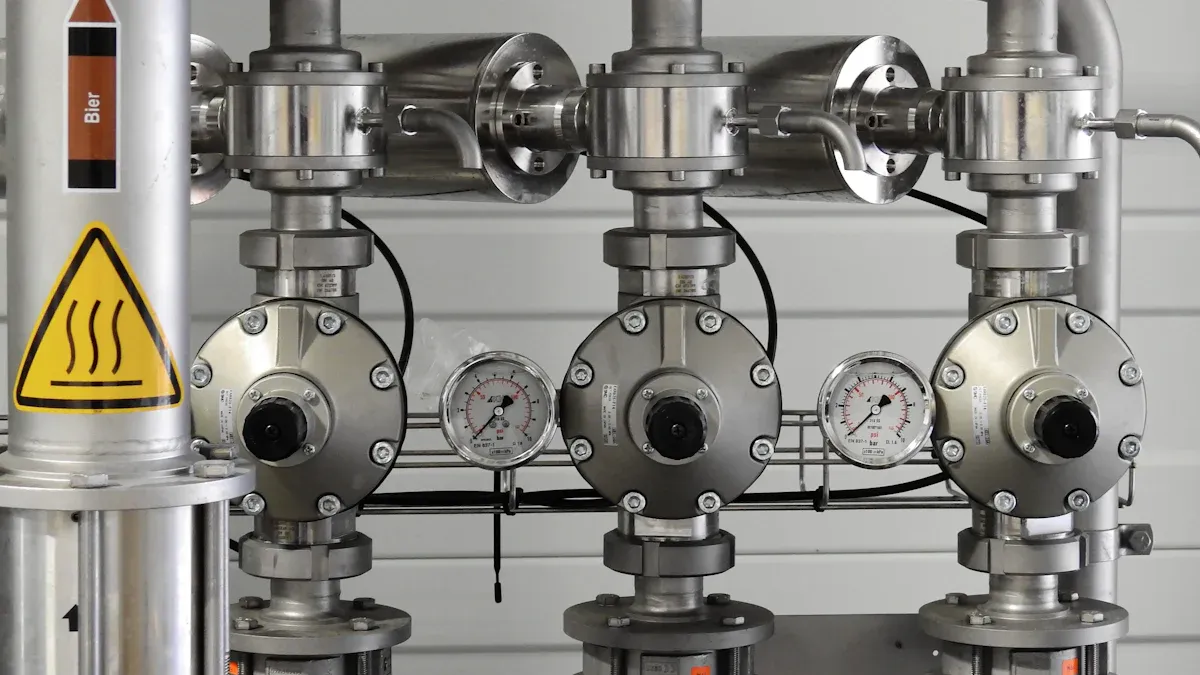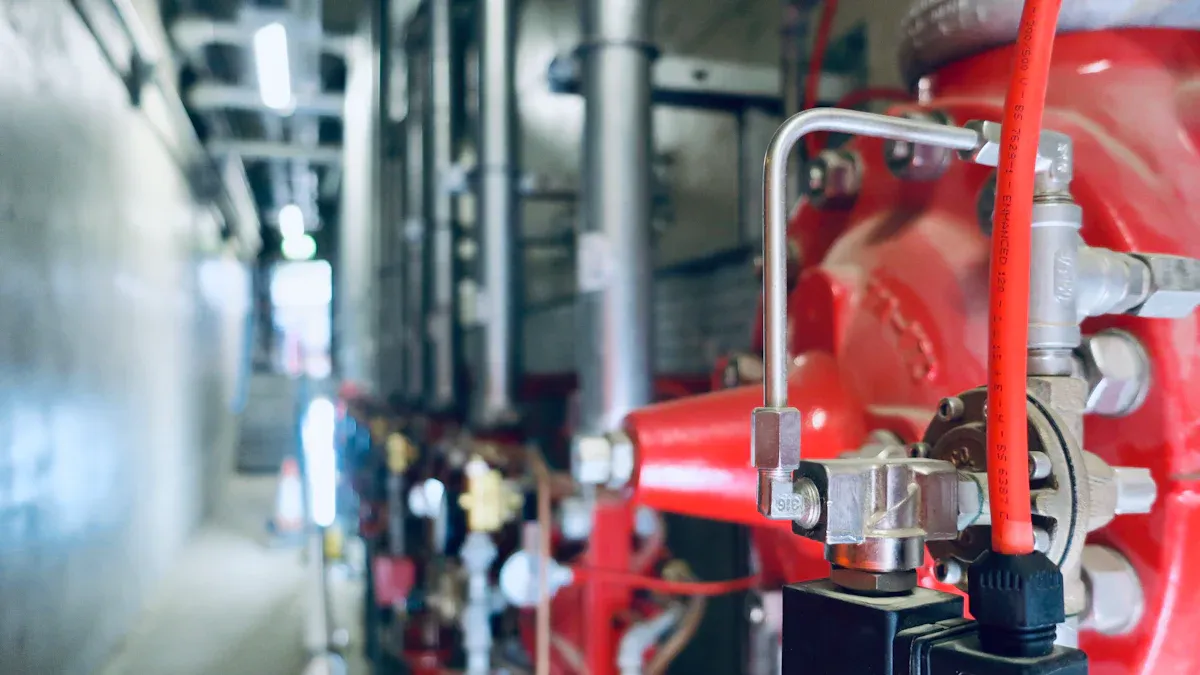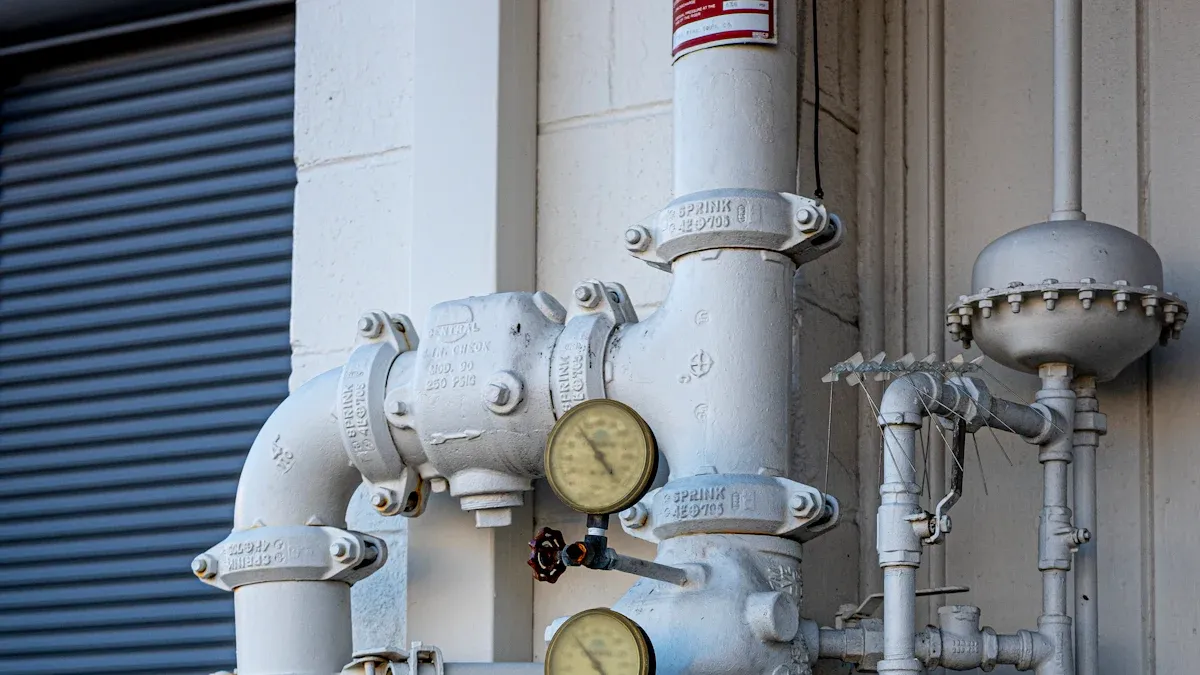What is a Pneumatic Directional Control Valve

A pneumatic valve directional control manages the flow of compressed air in systems by starting, stopping, or redirecting it. This device ensures air reaches the right components at the right time. Key performance metrics, such as response time and flow capacity, determine its effectiveness in automation. These valve directional controls play a vital role in industrial systems, enhancing precision and efficiency.
Key Takeaways
- Pneumatic valves control air flow to move parts correctly.
- Choosing the right valve means checking air type, flow size, and surroundings.
- Picking the right valve saves energy, lasts longer, and works better in factories.
Purpose and Functionality of Valve Directional Control in Pneumatic Systems

Controlling the Direction of Airflow
Valve directional control plays a critical role in managing the flow of compressed air within pneumatic systems. These valves direct air to specific parts of actuators, enabling precise movement and control. By regulating airflow and pressure, they ensure actuators operate efficiently and reliably. This functionality prevents issues such as erratic movements or reduced force, which could disrupt system performance. Proper airflow management also supports the sequence of operations, ensuring smooth and consistent functionality across the system.
Enabling Automation in Pneumatic Systems
Pneumatic directional control valves are essential for automating industrial processes. They provide precise control over airflow, pressure, and rate, which optimizes the performance of pneumatic systems. By maintaining the appropriate flow rate, these valves reduce energy waste and enhance process control. Facilities that rely on automation benefit significantly from this precision, as it minimizes errors and maximizes productivity. Additionally, the cumulative effect of multiple valves working together can lead to substantial energy savings, supporting sustainability initiatives in industrial operations.
Enhancing Efficiency and Precision in Operations
Efficiency and precision are vital in industrial applications, and valve directional control contributes significantly to both. These valves ensure that only the necessary amount of air is used, which reduces energy consumption and improves system efficiency. Accurate control over airflow and pressure enhances the performance of pneumatic systems, allowing for consistent and reliable operations. This precision not only boosts productivity but also reduces the environmental footprint of industrial facilities, making them more sustainable and cost-effective.
Types of Pneumatic Directional Control Valves

Spool Valves: How They Work and Applications
Spool valves are among the most common types of valve directional control devices. These valves use a cylindrical spool that slides within a housing to open or close airflow paths. The spool's position determines the direction and flow of compressed air. Spool valves can be actuated manually, electrically, or pneumatically, depending on the system's requirements.
| Type of Spool Valve | Description | Actuation Method | Flow Path | Number of Ports |
|---|---|---|---|---|
| Two-Position | Controlled by a manual lever with a spring return | Manual lever | Shows flow path based on active actuator | 2 |
| Three-Position | Has solenoids and spring return actuators | Solenoids | Middle position has no airflow until an actuator is active | 5 (5/3 Solenoid Valve) |
Spool valves are widely used in industrial automation, where precise control of airflow is essential. Their versatility makes them suitable for applications in manufacturing, robotics, and material handling systems.
Poppet Valves: How They Work and Applications
Poppet valves operate using a disc or cone-shaped element that seals against a seat to control airflow. When actuated, the poppet lifts off the seat, allowing air to pass through. These valves are known for their quick response times and ability to handle high-pressure applications.
The design and material properties of poppet valves enhance their durability. Advanced geometries, such as those in MAGNUM and HAMMERHEAD valves, reduce tensile stresses and improve reliability. This makes them ideal for demanding environments like agriculture and construction.
- Key Advantages:
- High efficiency, with up to 3.85% improvement in compressor performance.
- Exceptional reliability, with no measurable wear during testing.
| Valve Type | Efficiency Gain (%) | Reliability Observations |
|---|---|---|
| High Efficiency Poppet Valve | Outperformed existing | No measurable wear or failures during testing. |
| Standard Poppet Valve | 3% increase after 6 months | All valves operated reliably. |
| Older OEM Poppet Valve | Significant gains with new design | Comparable reliability to new design. |
Other Types: 2-Way, 3-Way, and 4-Way Valves
2-way, 3-way, and 4-way valves are categorized based on the number of ports and flow paths they provide.
- 2-Way Valves: These valves have two ports and are used to start or stop airflow. They are ideal for applications requiring streamlined flow with minimal resistance. Common materials include brass, stainless steel, and PVC.
- 3-Way Valves: These valves feature three ports and are designed for flow distribution or mixing. They are often used in systems requiring precise control of airflow direction.
- 4-Way Valves: These valves have four ports and are commonly used in double-acting actuators. They allow for more complex control of airflow, making them suitable for advanced pneumatic systems.
Each type of valve offers unique advantages depending on the application. For example, 2-way valves are often used in simple on/off systems, while 4-way valves are essential for controlling bidirectional actuators in industrial automation.
Key Factors to Consider When Selecting a Pneumatic Directional Control Valve
Media Compatibility and Material Selection
Choosing the right material for a pneumatic directional control valve ensures durability and compatibility with the media. Corrosion-resistant materials, such as stainless steel, perform well in high-pressure and high-temperature environments. For systems handling aggressive chemicals, PTFE offers excellent resistance and longevity. Selecting the wrong material can lead to premature wear or system failure, so understanding the media's properties is essential.
- Key considerations for material selection:
- Stainless steel resists corrosion and handles extreme conditions.
- PTFE is ideal for chemical resistance.
- Aluminum provides a lightweight and cost-effective option for general applications.
Flow Capacity and Pressure Requirements
Flow capacity and pressure ratings directly impact the valve's performance. A valve must handle the required flow rate without causing excessive pressure drops. Similarly, it should operate effectively within the system's pressure range to avoid performance loss.
| Metric | Description |
|---|---|
| Flow Capacity | Determines the volume of air the valve can pass, affecting actuator performance. |
| Operating Pressure | Indicates the maximum pressure the valve can handle without compromising functionality. |
| Leakage Rate | Affects system efficiency; lower leakage rates reduce energy loss and operational costs. |
Selecting a valve with the appropriate flow and pressure specifications ensures optimal system performance and efficiency.
Environmental Conditions and Durability
The operating environment significantly influences valve selection. Valves exposed to corrosive conditions require materials that resist degradation. In explosive atmospheres, safety standards like ATEX certification are critical. Extreme temperatures also demand valves designed to maintain functionality under such conditions.
- Environmental considerations:
- Corrosion resistance for harsh environments.
- Compliance with safety standards for explosive atmospheres.
- Temperature tolerance for high or low extremes.
Port Configuration and Mounting Options
Port configuration and mounting options determine how easily a valve integrates into a system. Common configurations include 2-way, 3-way, and 4-way valves, each suited for specific applications. Proper mounting options, such as sub-base or manifold mounting, simplify installation and maintenance.
- Tips for selecting port configurations:
- Match the number of ports to the system's requirements.
- Ensure the mounting option aligns with the system's design for ease of use.
Considering these factors ensures the valve fits seamlessly into the pneumatic system, enhancing reliability and performance.
Pneumatic directional control valves are essential for maintaining smooth operations in industrial systems.
- They regulate airflow, ensuring precise actuator movement and energy efficiency.
- Proper valve selection prevents inefficiencies like restricted airflow or slower response times.
| Benefit | Description |
|---|---|
| Enhanced Precision | Valves manage operation sequences, ensuring accurate task execution. |
| Improved System Longevity | Correct valve sizing reduces wear and extends equipment lifespan. |
Consulting experts ensures optimal performance and system reliability.
FAQ
What is the primary function of a pneumatic directional control valve?
A pneumatic directional control valve directs airflow to specific components, enabling precise actuator movement and ensuring efficient operation in pneumatic systems.
How does valve directional control improve system efficiency?
Valve directional control optimizes airflow and pressure, reducing energy waste and enhancing the overall performance of pneumatic systems in industrial applications.
What factors should be considered when selecting a valve directional control?
Key factors include media compatibility, flow capacity, pressure requirements, environmental conditions, and port configuration to ensure optimal performance and durability.











